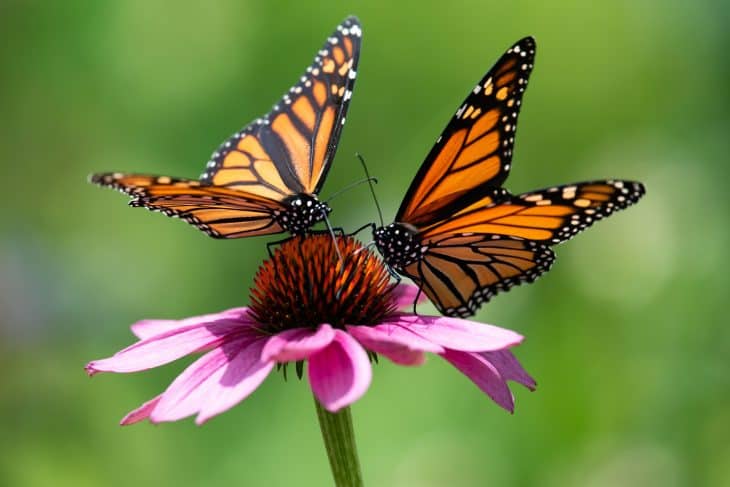
When it comes to butterflies, you never really know what to expect. The best part about this entire life cycle is that there are so many types of butterflies with different shapes and colors that, if you’re not an expert, would make you expect it to be the result of their hard work. Sometimes they turn out brown, black, or some technicolor you wouldn’t think could come out naturally in nature. The shapes and sizes of the butterflies are also interesting to point out as well. It could have been a science project of yours when you were in grade school, and you probably felt the urge to just rip that chrysalis or cocoon right out to see what was happening inside. However, you restrain yourself. First, because it’s cruel. Second, because you also know that whatever is going to come out of that shell will be even better than before.
Most people find the butterfly’s life cycle to be poetic and akin to changes in their lives. Surely you’ve at least seen a butterfly once and have felt the urge to take a photo or follow it wherever it goes. However, you can never quite catch it, or let it sit on your palm unless it wants to. We can assure you, though, that you’re not the only one who finds them fascinating with all their different colors, that’s why we’ve done all the digging for you to learn more about these fabulous creatures.
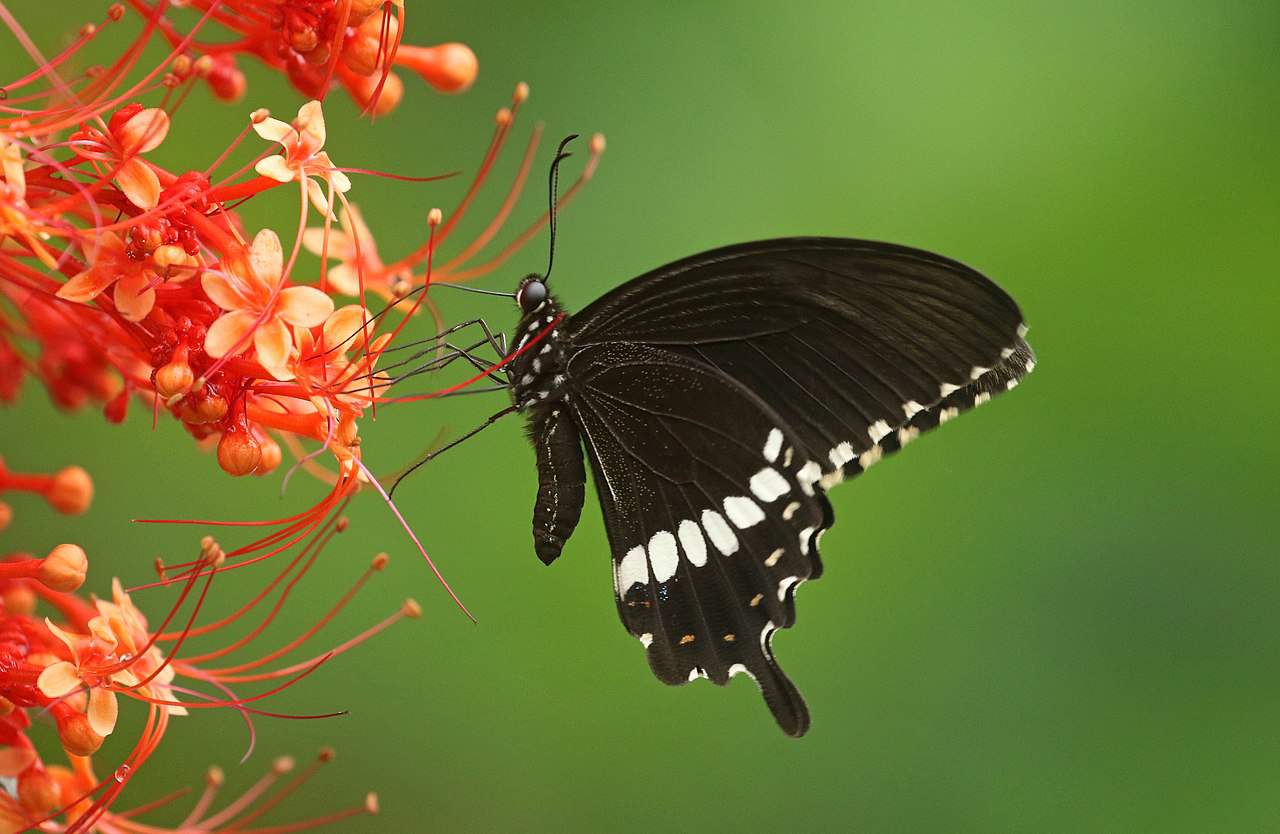
There are many ways to figure out what type of butterfly is in front of you. Identification isn’t that hard since their patterns and colors are always unique. In this article, we’ll be discussing types of butterflies through their colors.
Blue Types of Butterflies
Blue Morpho Butterfly
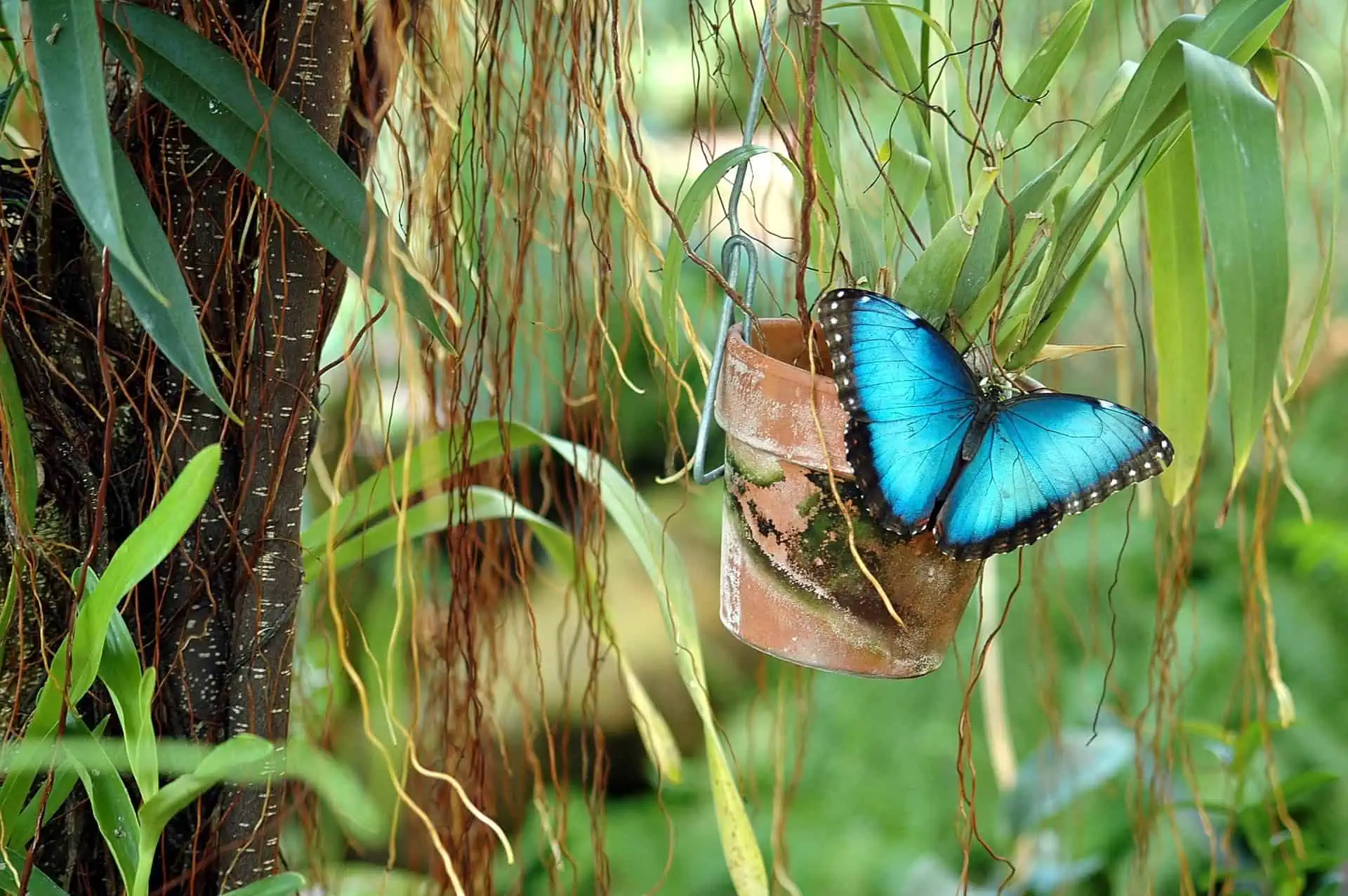
The Blue Morpho butterflies live in tropical rainforests around Central and South America. Many people look for the Blue Morpho since its rare color generates a luminescence unlike any other. Blue Morphos are not blue. Instead, light reflects on the scales of their wings to produce an optical illusion called iridescence.
Common Blue Butterfly
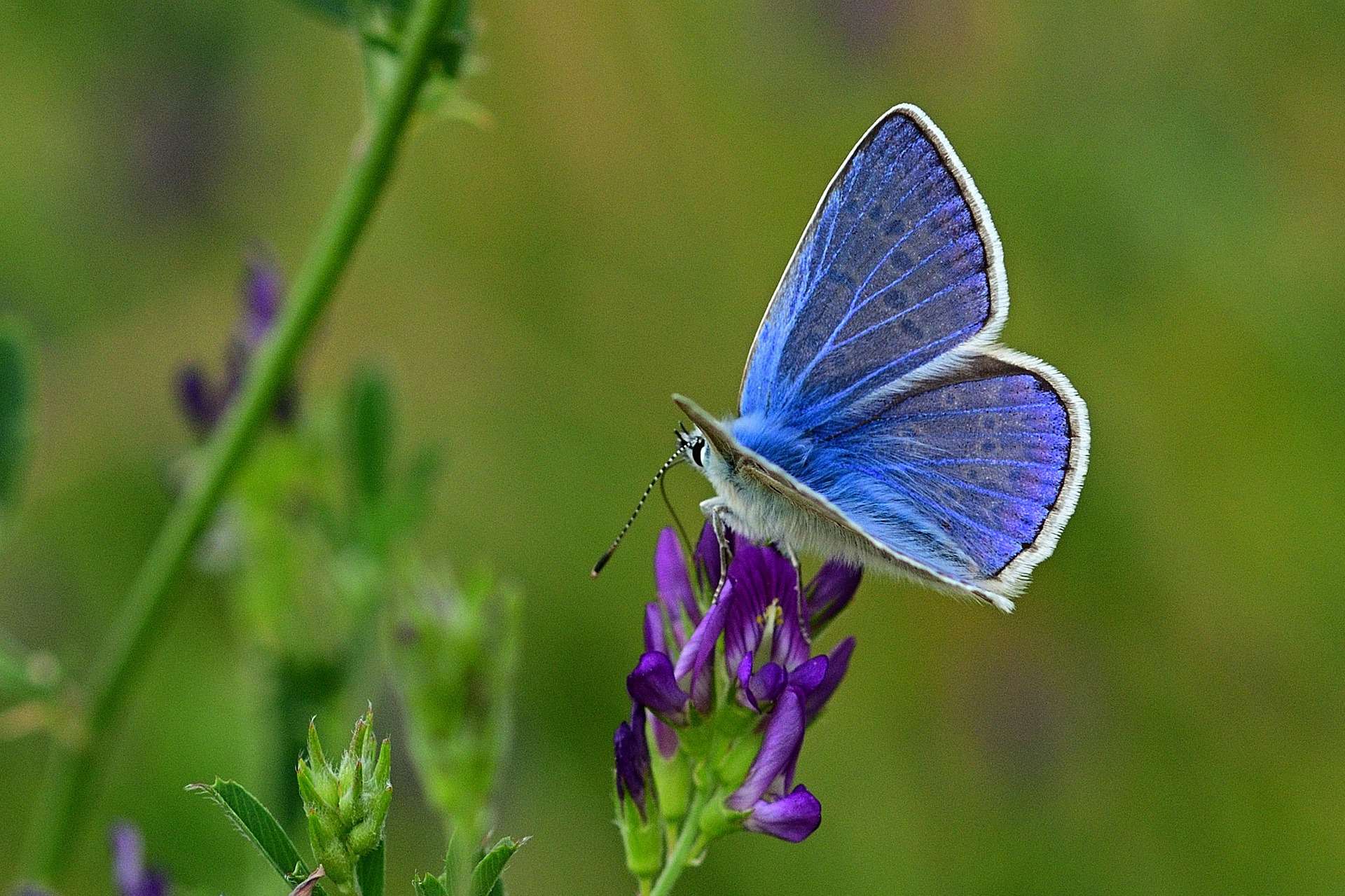
We may find the Common Blue butterfly in the United Kingdom. The color of the female’s wings is a wide range of brown and blue, depending on whether you’re in the West of Scotland and Ireland or the South of England. They’re usually easy to find, hence the name common blue, but there have been reports of a decline in isolated areas.
Large Blue Butterfly
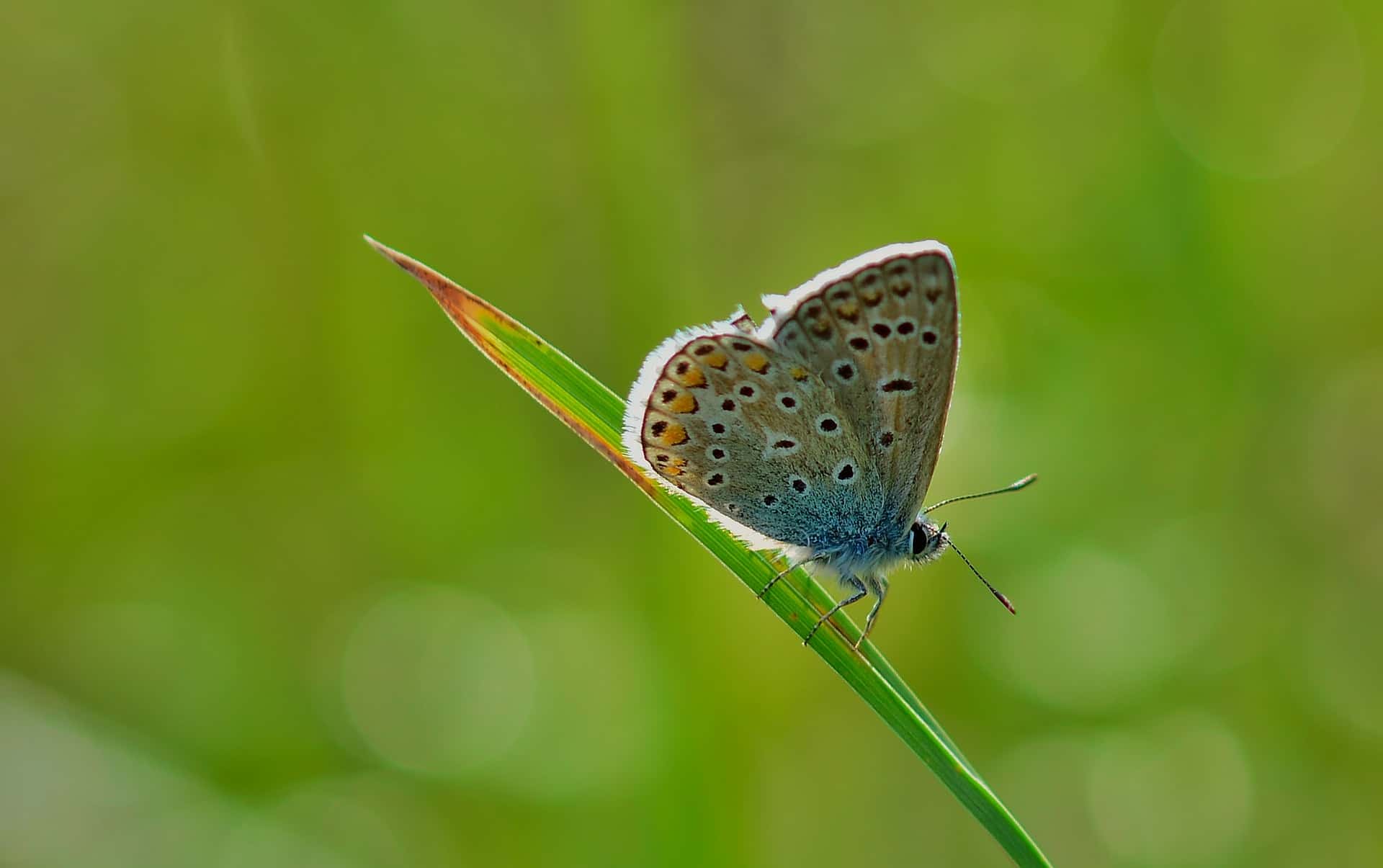
The Large Blue butterfly is indeed not that large and sometimes not even that blue, but they are the largest blue butterfly to be discovered. In the 70s, they were declared extinct only to reappear in the South of England a few years later. Because of its humble population, the Large Blue is difficult to spot.
Yellow Types of Butterflies
Eastern Tiger Swallowtail Butterfly
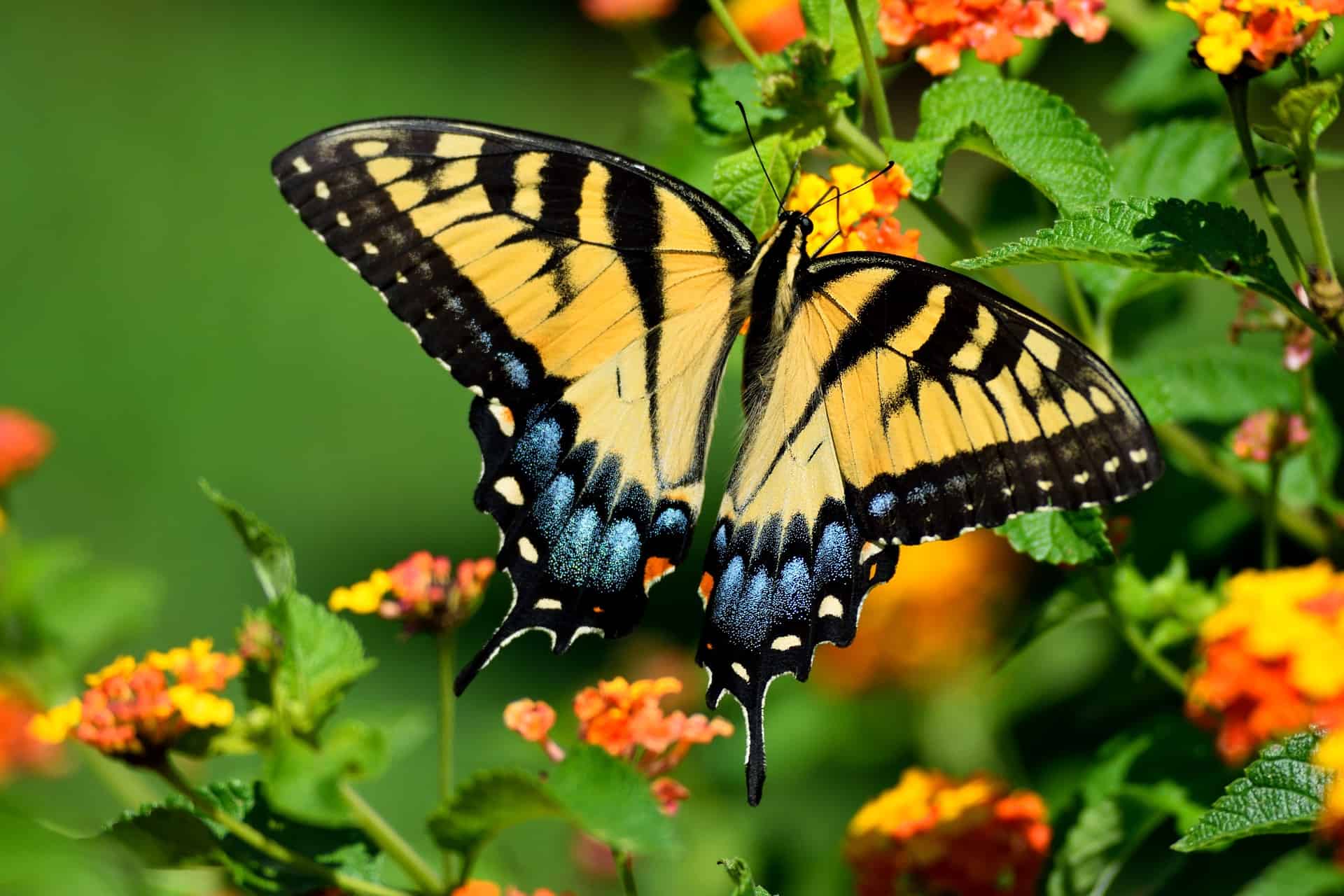
The Eastern Tiger Swallowtail lives in the East of the Mississippi River and parts of Mexico. They’re usually alone and have a fondness for trees. There are instances of Puddling, a phenomenon where male Eastern Tiger Swallowtails decide to have a little get-together and drink water in damp places. Their females only lay their eggs on roses and magnolia plants. Despite their distinct behavior, they deem this bright yellow butterfly easy to find.
Malachite

The Malachite Butterflies are comfortable in Brazil, Mexico, South of Florida, and South of Texas. An interesting fact about the Malachite males is that they slow down their flight whenever looking for females. We can find malachites in forested areas. Couples of this species hide underneath shrubs.
Common Grass Yellow
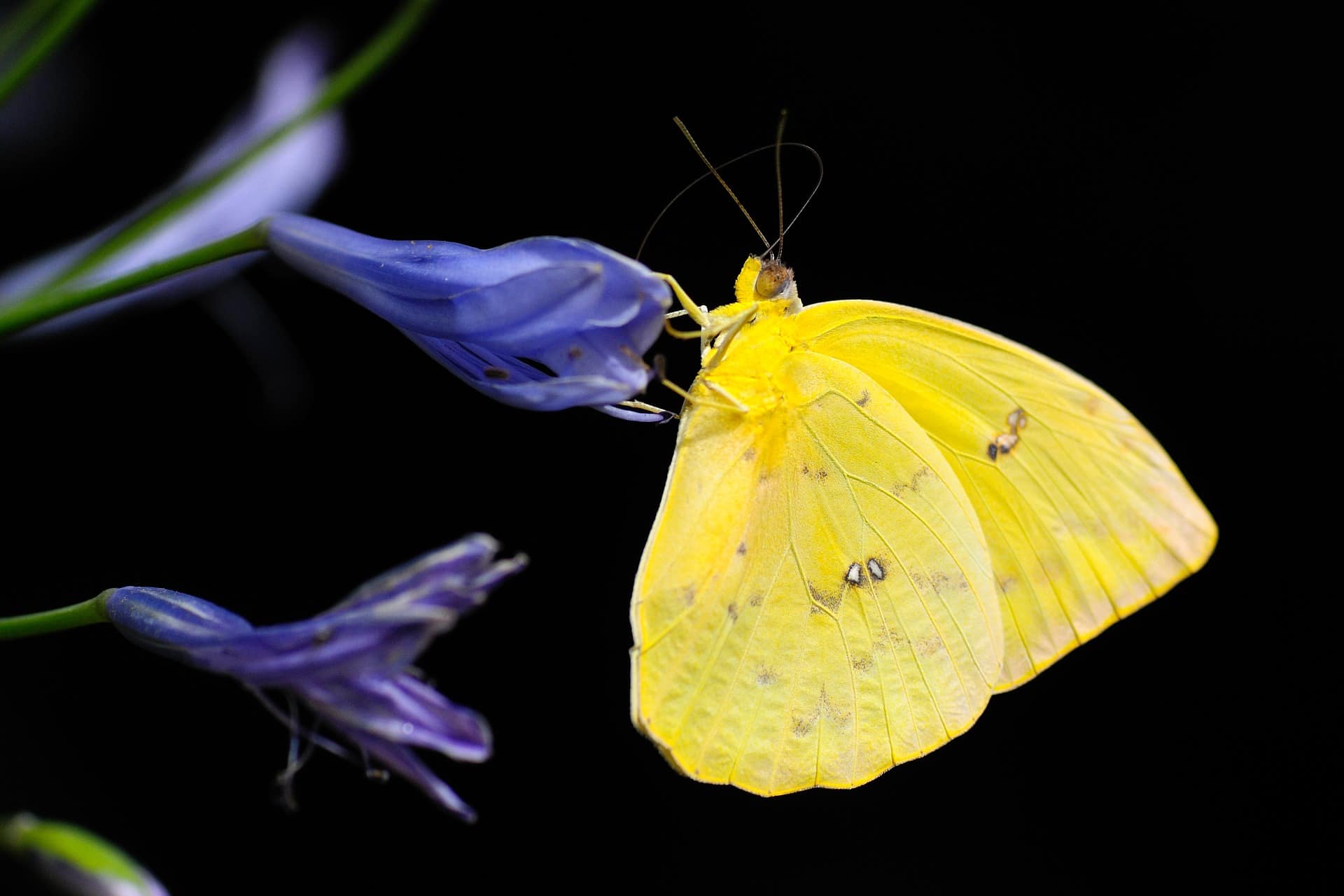
The Common Grass Yellows often fly in low altitudes and can be found in open grasslands. Their sunny color can change to a darker tone during the summer because of a phenomenon called Seasonal Polyphenism. We can discover the male Grass Yellows in groups while female Grass Yellows prefer solitude.
Black and White Types of Butterflies
Apollo Butterfly
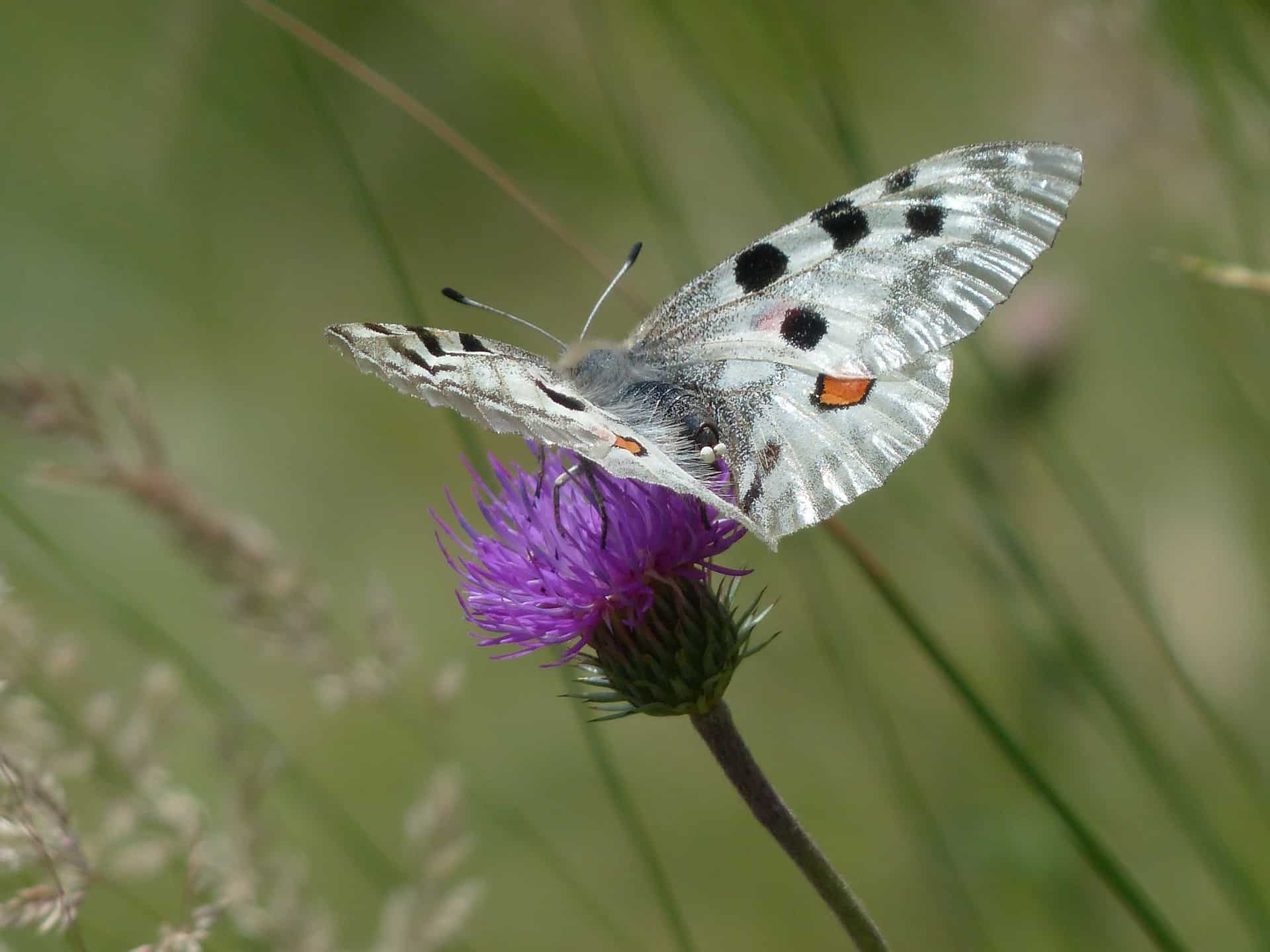
They also call the Apollo butterfly Crimson-Ringed in literature. It lives in Central Europe and can be occasionally found in the British Isles as early as 1803. Apollo butterflies prefer mountains that are covered with rocks and surrounded by wildflowers. Some studies suggest that the male Apollo butterfly, after mating with his female counterpart, would create the sphragis, also known as a mating plug, on her back to make sure she could not reproduce again.
Malabar Tree Nymph
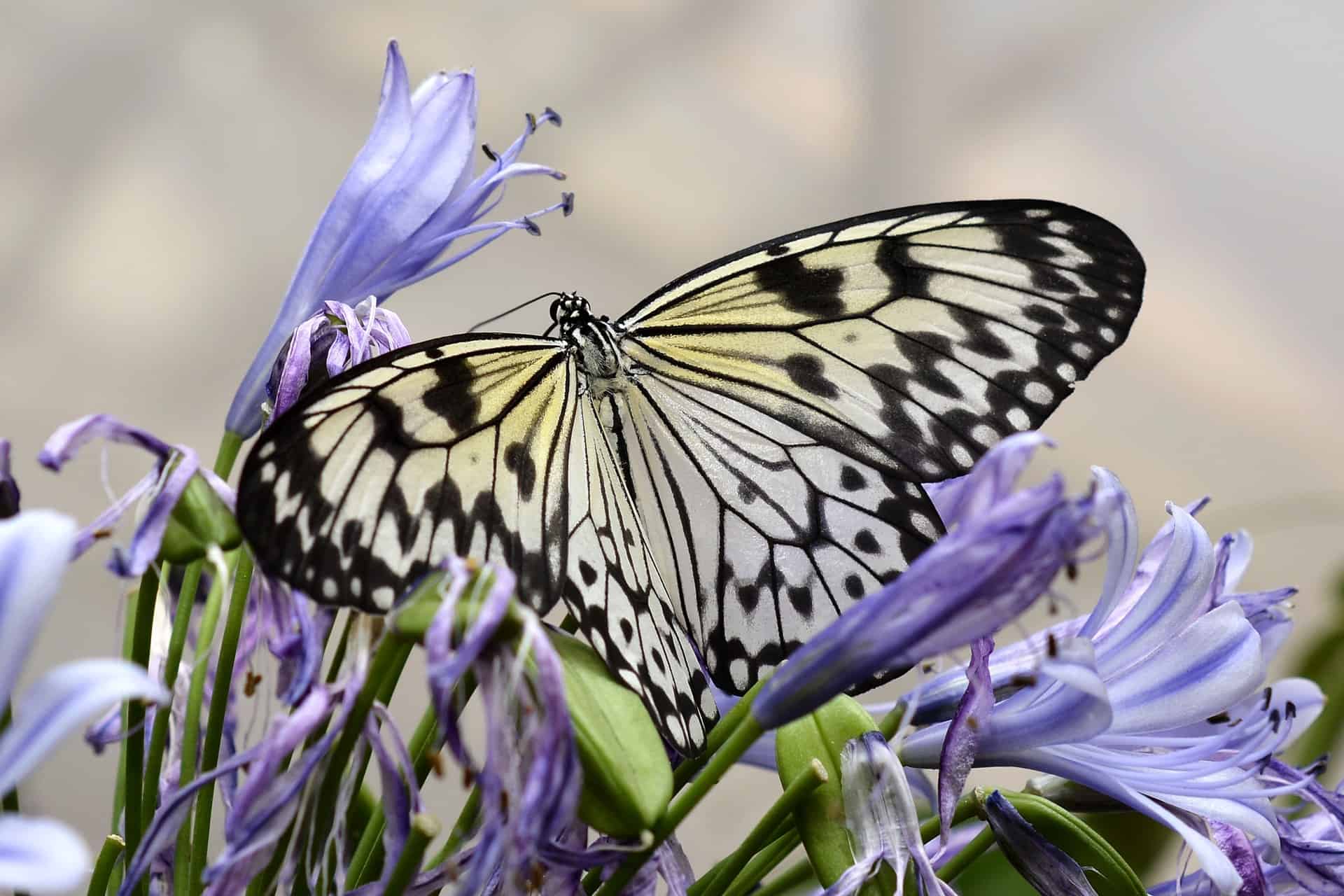
The Malabar Tree Nymph is endemic to the Western Ghats of South-Western India. Their gliding form of flying earned them the nickname “Paperkite” as they hover from time to time. Its large physique and unique way of flight have also been recognized enough to become the official state butterfly of Goa, and rightly so.
Common Mormon

The Common Mormon is an eye-catcher for sure, but what’s interesting about these butterflies is the female’s ability to camouflage themselves into their male counterparts or even an entirely different butterfly altogether. Female Common Mormons can disguise themselves as swallowtails, known to be toxic and giving these females a chance against predators in the wild.
Orange Types of Butterflies
Monarch Butterfly
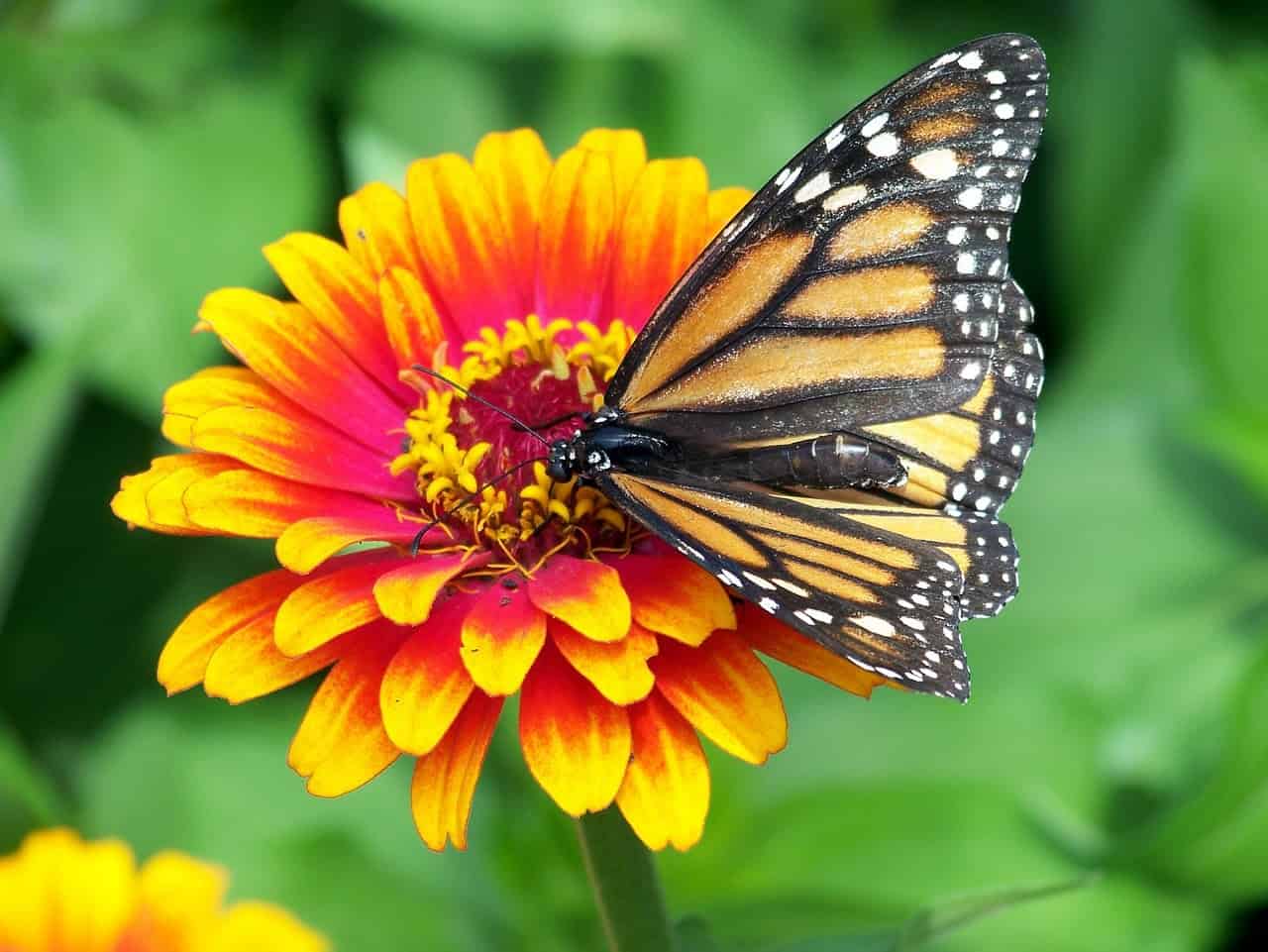
One of the most famous butterflies out in the world, the Monarch butterfly’s wings are easily identifiable, and this is a benefit for them. Monarchs, during their caterpillar forms, eat milkweed and after turning into butterflies, develop an immunization to its toxicity. Also, the Monarch female even lays its eggs on milkweed. This adaptation to the poison, and the color of their wings, help predators realize that if they were to eat a Monarch, they would likely perish.
Gulf Fritillary
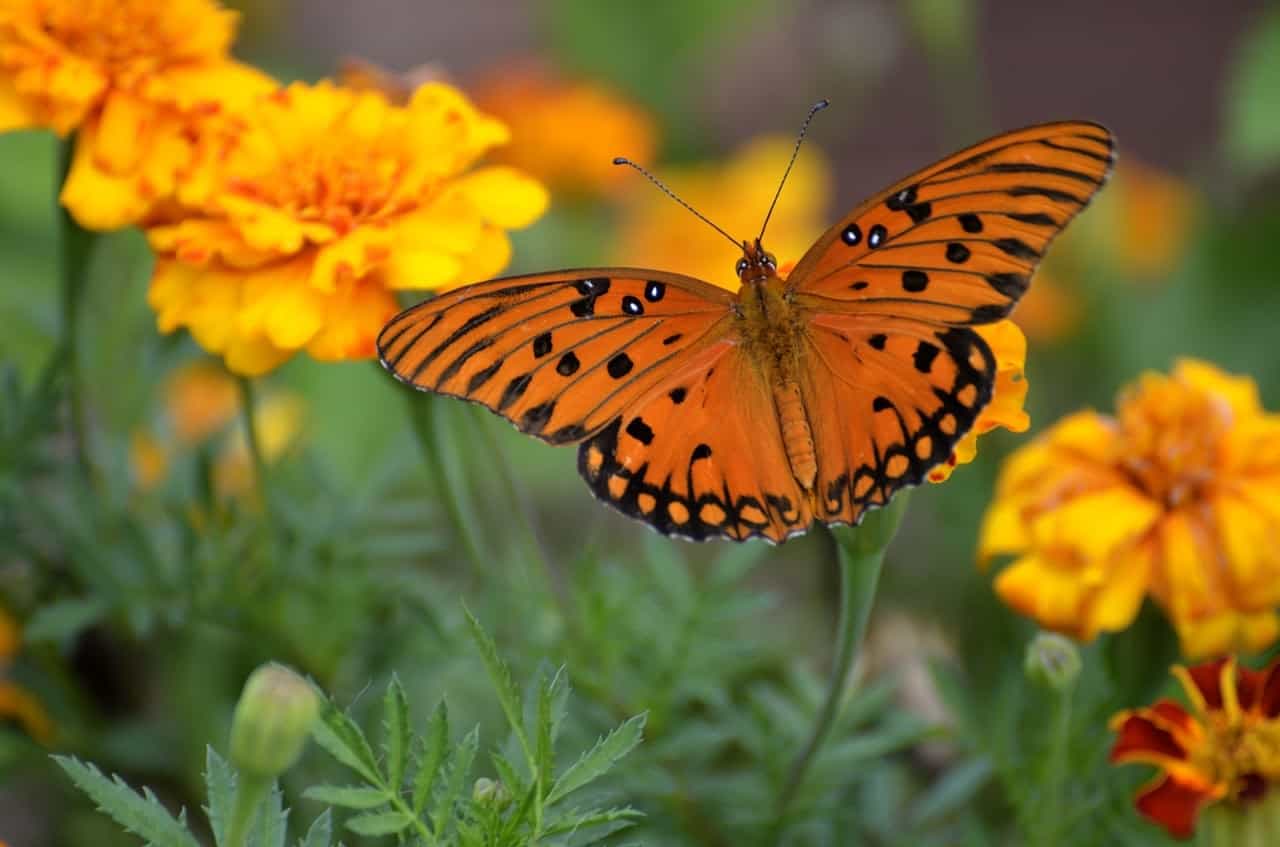
What’s interesting about the Gulf Fritillary is its favor of the passionflower. The flower can be in any color, too. It’s a common butterfly whose caterpillar stage features its bright orange body with long black spikes. It prefers constant sunlight and open areas. Therefore, the Gulf Fritillary can be found in the southernmost part of the United States.
Leopard Lacewing
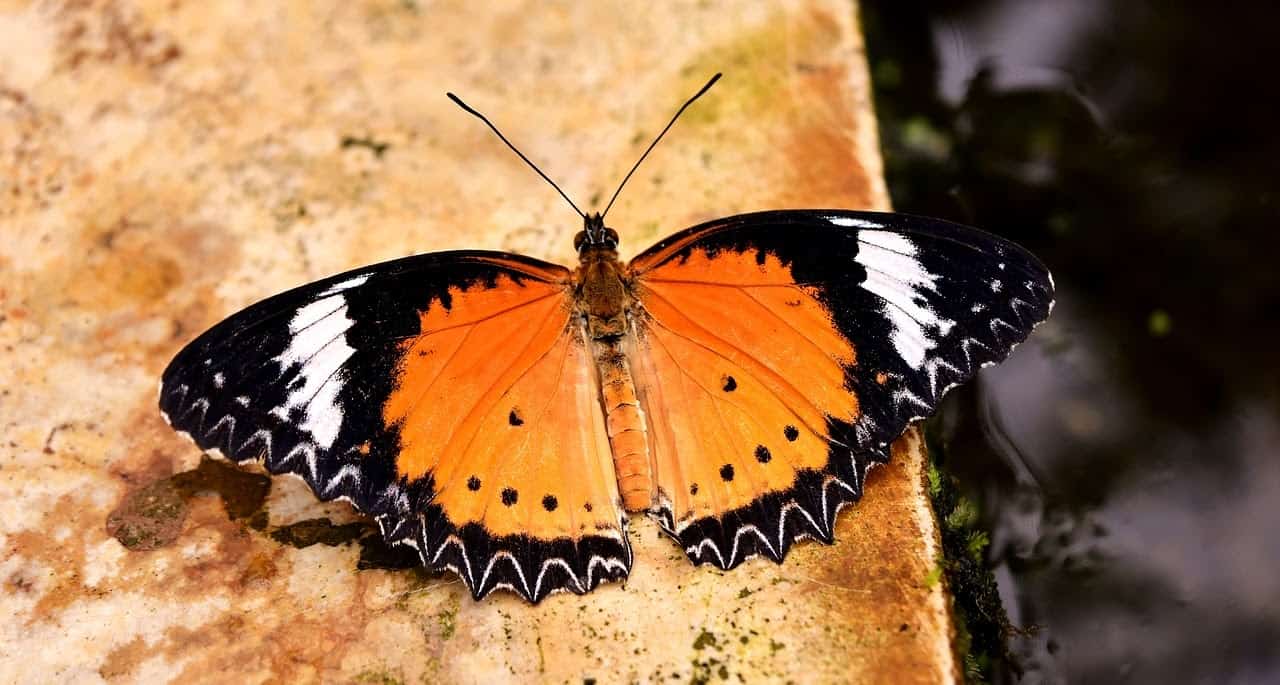
The Leopard Lacewing flutters around Southeast Asia and was recently found to be settling in Singapore around 2005. The males of the butterfly are actually the only ones colored orange. This is so that they can be able to find a mate by grabbing her attention, whereas the female Leopard Lacewing stays still until mated.
Green Types of Butterflies
Tailed Jay
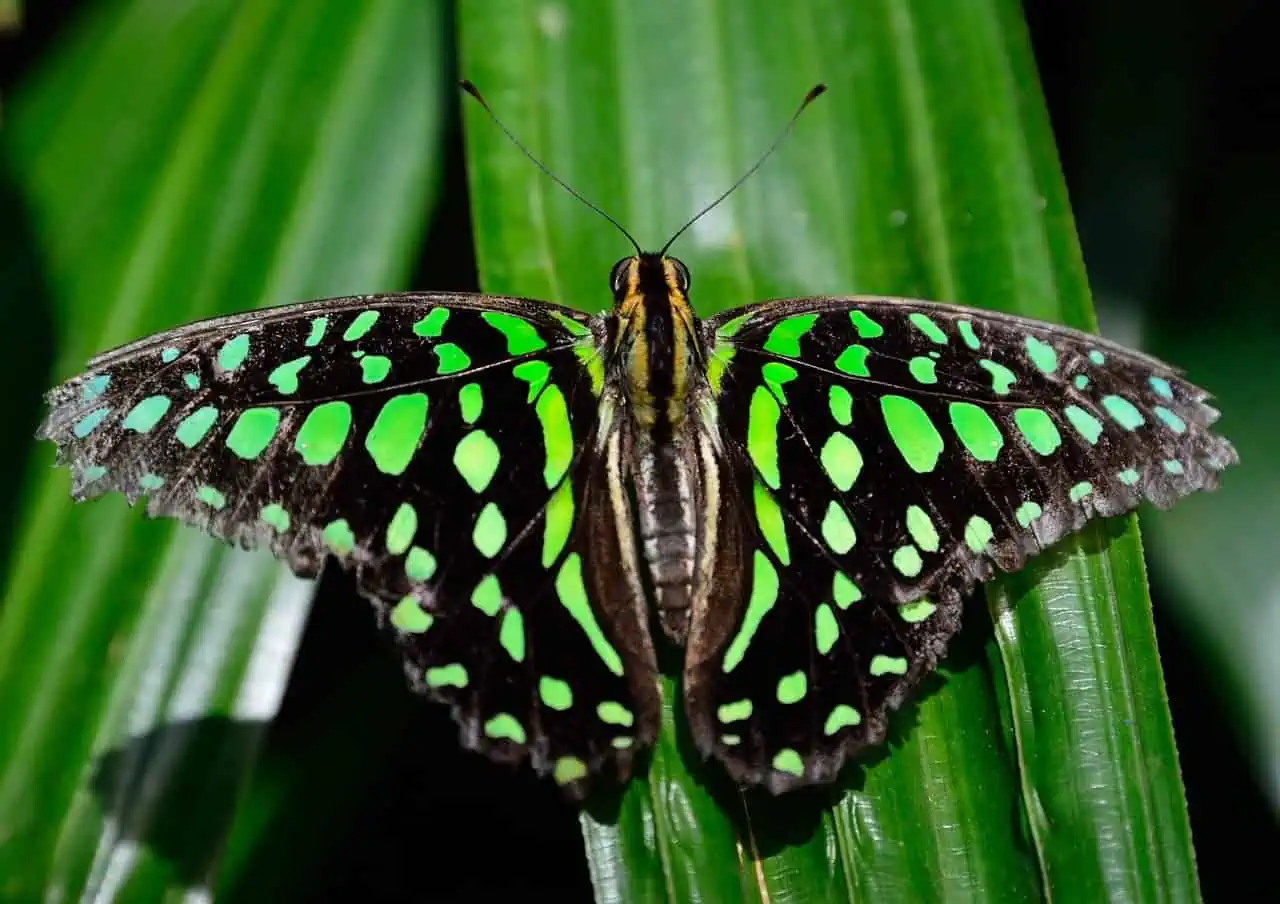
The Tailed Jay’s eye-catching green pattern earned itself the nickname, the green spotted butterfly. It’s actually easy to breed in captivity, making it suitable to sell in the market, given the right supplies. Its green wings fade into yellow once it has completed its life cycle.
Cairns Birdwing
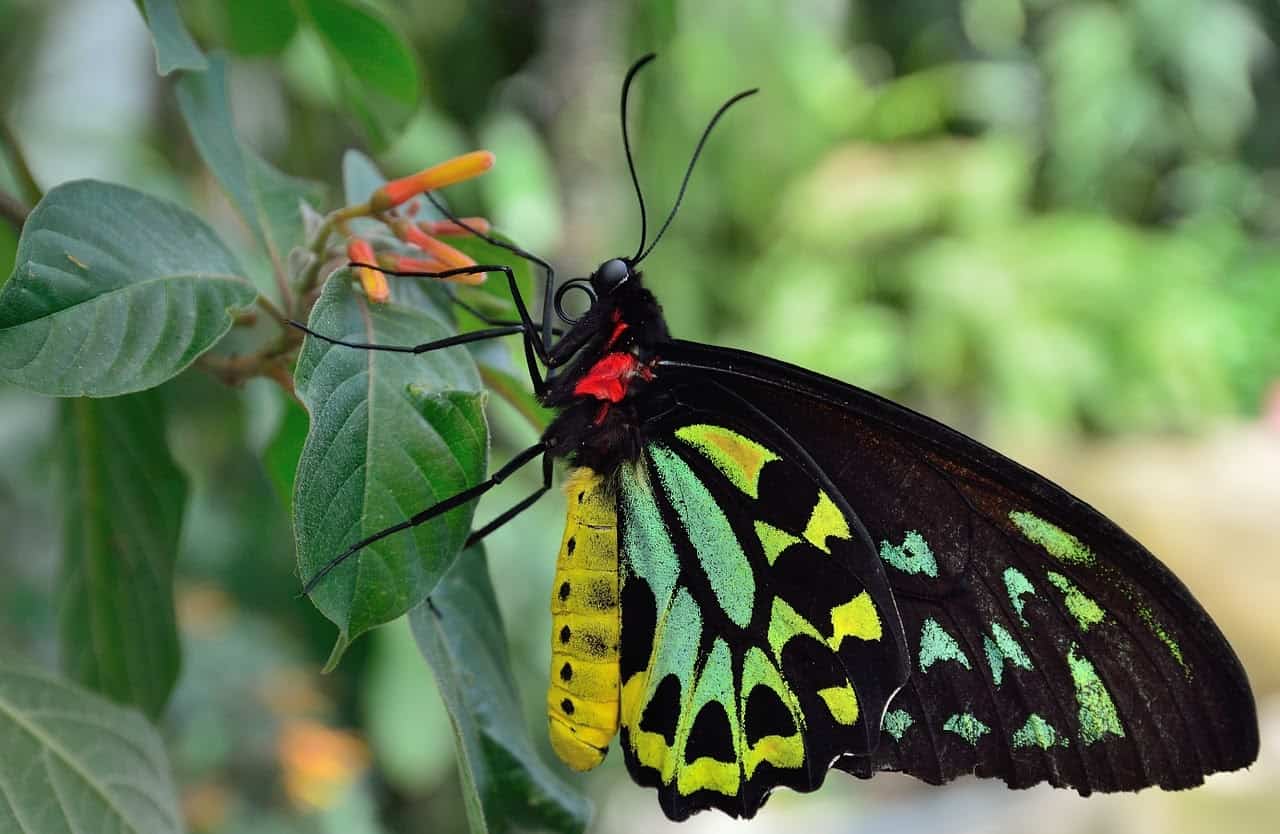
The Cairns Birdwing males are colorful, adding to the green tint of their wings. The females, although not as brightly colored, are larger than the males. This is impressive, seeing as the Cairns Birdwing earned itself the title of being the largest butterfly in Australia.
Emerald Swallowtail

Just like our Blue Morpho friend, the Emerald Swallowtail’s green color is actually just a reflection against blue and yellow light. This means, depending on the angle you would look at, the butterfly’s wings could be blue or yellow. Native to parts of Southeast Asia, and as a result, is found in the tropics. It also belongs to the large genus of butterflies called the Ornithoptera.
History of Butterflies
The origin story of butterflies is vague, despite intensive research and their modern popularity. Fossils of prehistoric butterflies are rare to find. Even those discovered show little to no changes in today’s butterflies.
Theories suggest that butterflies are just colorful moths, seeing as there could be a connection between them and the Hedylidae, a common moth, as the oldest living relative of butterflies. There is also research on pinpointing the exact evolutionary development of butterflies that seem to show them being born during the Cretaceous Period, a time when dinosaurs existed and when the flora emerged from the soils of the Earth.
All of this is still just speculation, since research surrounding butterflies and their prehistoric days has just emerged from the past.
Life Cycle of a Butterfly
The life cycle of a butterfly starts as a caterpillar egg laid on a small leaf, where they grow into a caterpillar that feeds endlessly, which then turns into a pupa, and finally a butterfly out of its chrysalis.
Let’s refresh our memory from our elementary school years and discuss the process of a butterfly’s metamorphosis in great detail. We start as soon as they are born. You usually find caterpillar eggs on top of leaves or the underside. After 3 to 7 weeks of just laying about, the lightly colored or black eggs hatch into caterpillars.
There are many types of butterflies, but even more types of caterpillars. Caterpillars change, but not all of them turn into butterflies, with some turning into moths. The only difference between a moth and a butterfly during their pupa stage is the type of shell they have. Moths favor the cocoon-like shell while butterflies fashion themselves a nice chrysalis around them. After feeding themselves non-stop, they finally turn into pupas.
It’s not all fun and games, though. In the butterfly world, their average life span lasts for a month. Truthfully, it depends on the size and species of every type of butterfly. Your average garden butterfly only lives for 2 weeks.
Symbolism of Butterflies
Many believe that butterflies symbolize life’s changes and the rebirth into something beautiful. This is probably because they die before turning into a butterfly. Butterflies symbolize resurrection for Christians, while as an animal totem, butterflies are spirits of freedom from burdens or negativity. Some people believe that should one land on you, it’s a loved one who has passed on.
Most cultures affect the way we see animals, and butterflies are not an exception. The meaning of a butterfly can also depend on its color, or the perspective and outlook of the person in question. Their colors also affect the way each person finds meaning in the butterflies. An example would be blue butterflies that are considered as malicious spirits to some cultures, but a symbol of peace and joy to others because of their calming effects.
Was this page helpful?
Our commitment to delivering trustworthy and engaging content is at the heart of what we do. Each fact on our site is contributed by real users like you, bringing a wealth of diverse insights and information. To ensure the highest standards of accuracy and reliability, our dedicated editors meticulously review each submission. This process guarantees that the facts we share are not only fascinating but also credible. Trust in our commitment to quality and authenticity as you explore and learn with us.
